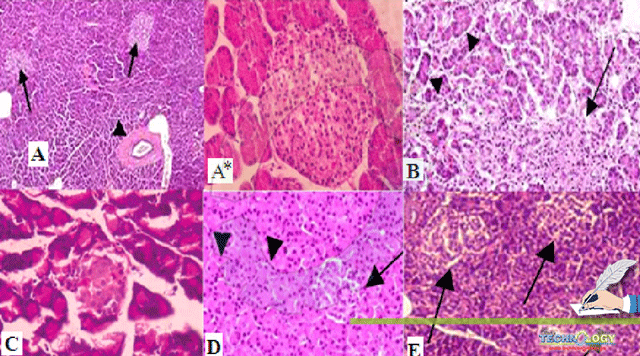Metabolic disorder associated with insufficient insulin secretion, insensitivity of the endogenous insulin to its receptors and progressive failure of pancreatic β-cells that results in hyperglycemia (Rolo and Palmeira, 2006).

Diabetes
It is a syndrome resulting from the varied interactions of environmental and hereditary factors. Characterized by abnormal insulin secretion. Abnormal insulin utilization affecting metabolism involving proteins, carbohydrates, and fats. The risk factors of diabetes are damaging of pancreas β-cells, liver and kidney (Cheng et al., 2013).
Types of Diabetes
Diabetes mellitus is classified mostly as Type I and Type II diabetes. A third type diabetes is Gestational diabetes, it occurs only in pregnancy.
Type 1 diabetes is caused by an inadequate supply of insulin. Characterized by β cells destruction of the pancreas (George et al, 2002). In type 2 diabetes, insulin resistance occurs as a result of insulin receptor abnormalities, but insulin levels are still normal. (Zafar., 2011).
Diabetic Complications
Sabu and Ramadasan (2004) said that the complications of diabetes may lead to blindness, kidney failure, stroke, heart attack, Erectile dysfunction and lack of sensation or itching hands or feet (Dwivedi and Das Paul. 2013).
Many researchers have proved that the role of trace metals with glucose metabolism and their relationship with diabetes. Zinc, magnesium, and chromium have reported to play a role in blood sugar maintenance and used in diabetes therapy (Wang and Cefalu. 2010).
Zinc as Activator of Enzymes
Over 300 enzymes are activated by zinc in the body, and it plays a crucial role in different metabolic pathways, including glucose metabolism (Haase et al, 2008).
It has been proved by research that several zinc transporters in pancreatic β-cells like zinc transporter-8 have a potent role in insulin secretion (Rungby, J. 2010).
ZnONPs as Antidiabetic Agent
ZnONPs effectively reverse diabetes-induced pancreatic structural, ultrastructural, and functional injuries (Umrani and Paknikar. 2014); normalize blood glucose (Wahba et al, 2016) and serum insulin levels and restore the sensitivity of the insulin receptor to insulin (El-Gharbawy et al, 2016). It might be an antioxidant agent at lower doses. (Umrani and Paknikar. 2014)
Sperm from diabetic rats is poor in number and sperm cells present a weak motility. The quality of sperm can be improved in presence of ZnONPs alone or in combination with insulin by increasing the production of testosterone (Afifi et al, 2015).
The supplementation of ZnONPs in rats exposed to nicotine minimizes the adverse effects of exposure by reducing oxidative stress and increasing the expression of steroidogenic enzymes, improving male fertility (Mohamed and Abdelrahman. 2019).
Tang, K.S. (2019) stated that Zinc oxide nanoparticles (ZnONPs) are novel agent to deliver zinc, have great implications in many disease therapies including DM.
The development of zinc-based agent would be promising in the treatment of diabetes and its associated complications as zinc supplement has shown an ameliorating effect in preclinical studies (Tang, K.S. 2019).
Key Wors: ZnONPs (Zinc Oxide Nanoparticles
References
Afifi, M.; Almaghrabi, O.A.; Kadasa, N.M. Ameliorative Effect of Zinc Oxide Nanoparticles on Antioxidants and Sperm Characteristics in Streptozotocin-Induced Diabetic Rat Testes. BioMed Res. Int. 2015, 2015, 1–6.
Cheng D, Liang B and Li Y, 2013. Antihyperglycemic effect of Ginkgo biloba extract in streptozotocin-induced diabetes in rats. Biomed Res Int 3:1-7.
Dwivedi C and Daspaul S. 2013. Antidiabetic herbal drugs and polyherbal formulation used for diabetes: A review. J Phytopharmacol 2: 44-51.